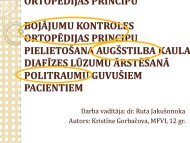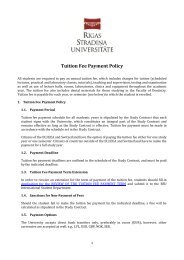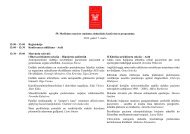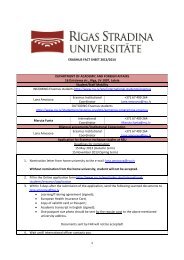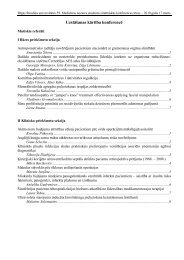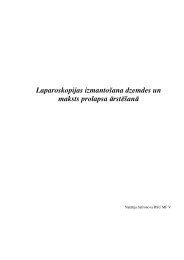History of Latvia: a Brief Survey
History of Latvia: a Brief Survey
History of Latvia: a Brief Survey
- No tags were found...
You also want an ePaper? Increase the reach of your titles
YUMPU automatically turns print PDFs into web optimized ePapers that Google loves.
A battle between the Couronians and the German crusaders nearthe coast <strong>of</strong> Gotland in the Baltic Sea, 18 April 1210. It was thegreatest victory <strong>of</strong> the ancient <strong>Latvia</strong>ns over the crusaders in theBaltic Sea.The stamp <strong>of</strong> Rīga city in 1225.ships and five hundred armed German soldierswere hired to assist the Christian missionaries ina campaign to forcibly convert the people <strong>of</strong> theregion. In 1201 Bishop Albert began building thecity <strong>of</strong> Rīga near the mouth <strong>of</strong> the river Daugava,where Liv villages were located on the RīdzeneRiver. Rīga became the largest and most powerfulcity on the southern coast <strong>of</strong> the Baltic Sea. Thefounding <strong>of</strong> Rīga was the beginning <strong>of</strong> urban historyin the whole Baltic area.An image <strong>of</strong> Pope Innocent III (whowas Pope 1198-1216) from a medievaldocument. A papal bull issued byInnocent III began the second crusade inthe Baltic territory.Structure <strong>of</strong> the Holy Roman Empire.Illustrations from the NurembergChronicle (Die Schedelsche Weltchronik),by Hartmann Schedel (1440-1514).As the German soldiers <strong>of</strong> the Livonian Order seized control <strong>of</strong> the region, the development<strong>of</strong> separate tribal realms and state-like formations in ancient <strong>Latvia</strong> came to an end.Among religious orders, Cistercians and Dominicans played the most important role inLivonia. The Cistercians established the first monastery in Daugavgrīva (German: Dünamünde)in 1205-1207 which became a sort <strong>of</strong> Western diplomatic centre in the Baltics. In the1200s,a confederation <strong>of</strong> feudal nations was developed under German rule and named Livonia.The territory included today’s <strong>Latvia</strong> and Estonia. The confederation <strong>of</strong> Livonia remainedan important factor in the politics <strong>of</strong> Northern Europe until the second half <strong>of</strong> the 16thcentury. Livonia was the part <strong>of</strong> a mainly Germanic conglomeration <strong>of</strong> lands <strong>of</strong> the HolyRoman Empire.9



